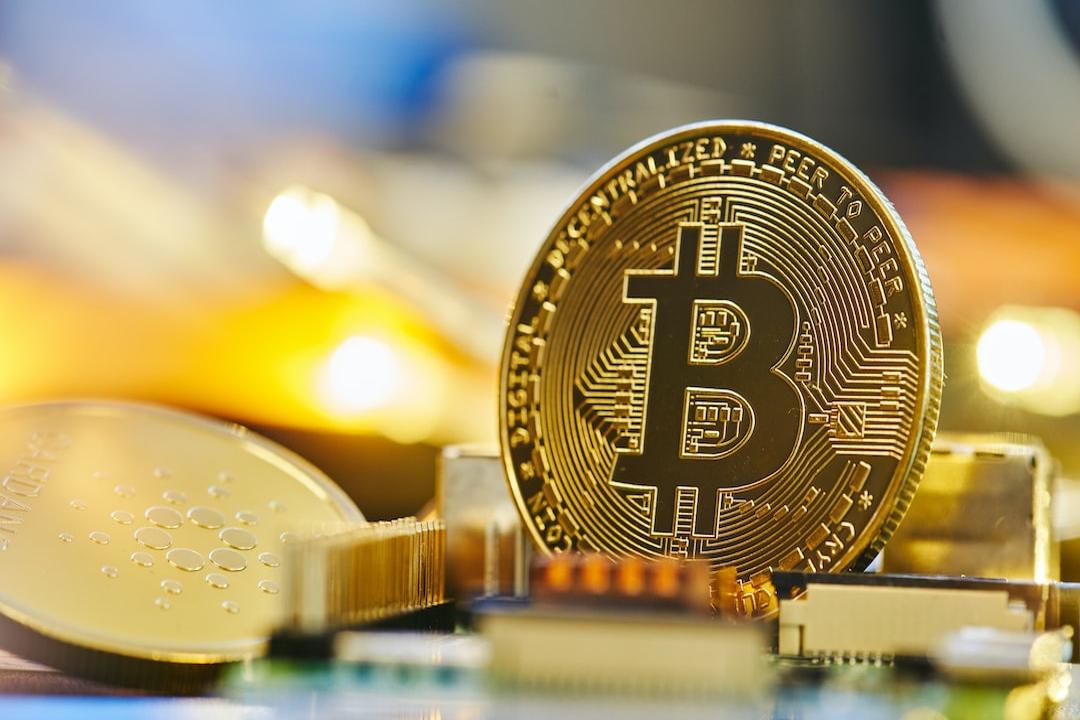Tether Deepens Its Engagement in the Bitcoin Ecosystem
At the center stage of the Bitcoin Conference 2025, Tether CEO Paolo Ardoino stood before an image of Wukong and stated, “Bitcoin is my Wukong; it is our friend.”

This seemingly emotional expression is, in fact, a reflection of Tether’s strategic core. As the issuer of the world’s largest stablecoin USDT, Tether is embedding itself into various aspects of the Bitcoin ecosystem, from reserve asset allocation to mining operations, from ecological investments to infrastructure construction. Tether is deeply integrating into the neural hub of the new global financial order.
Due to Tether’s deep penetration into the Bitcoin system, its actions have sparked increasing conspiracy theories and heated discussions abroad, questioning whether it artificially inflates Bitcoin prices by continuously issuing USDT, thus creating a “closed-loop bubble” sustained by Bitcoin reserves, gold backing, and USDT issuance.
Establishing Bitcoin Reserve Strategy, Identified as the Sole Major Buyer
Since May 2023, Tether announced plans to allocate up to 15% of its realized net operating profit regularly to purchase Bitcoin. Tether expects that its current and future Bitcoin holdings will not exceed the shareholder capital buffer and will further strengthen and diversify its reserves. As of the first quarter of 2025, Tether held Bitcoin valued at approximately $7.66 billion, significantly increasing compared to the previous quarter.
The “Gold + Bitcoin” dual-reserve mechanism serves as a hedge against sovereign currency risks for Tether and yields substantial financial returns. Ardoino recently revealed that Tether currently holds over 100,000 Bitcoins and over 50 tons of gold. In 2024 alone, Tether’s net profit reached $13.7 billion, with investments in gold and Bitcoin contributing approximately $5 billion in profits. Ardoino stated that their gold holdings are not meant to challenge Bitcoin but to counter the centralized fiat currency system.
However, WhaleWire founder Jacob King pointed out, “Relying on constant money printing and taking over, Tether is the only major buyer in the entire Bitcoin market. It raises Bitcoin prices by issuing new USDT and then sells the excess to buy dollars and gold as reserves to prove its legitimacy.” He referred to this model as the “ultimate house of cards,” suggesting that if stablecoins face regulation or Bitcoin demand wanes, the entire system could become unbalanced.
Tether’s ambitions regarding Bitcoin extend beyond merely hoarding coins. In April of this year, Tether, in collaboration with SoftBank and Cantor, initiated a joint venture for crypto investment named Twenty One Capital, aiming to create a global Bitcoin asset acquisition and management platform with a total scale of $3 billion. This platform is seen within the industry as a structural layout to rival MicroStrategy. In this joint venture transaction, Tether holds 42.8% of the equity and 51.7% of the voting rights, effectively maintaining control. Cantor holds a 5% stake in Tether, with its CEO Brandon Lutnick being the son of U.S. Secretary of Commerce Howard Lutnick.
“Jack Mallers (CEO of Twenty One Capital) has close ties with Tether and Bitfinex, and his other company, Strike, has long had a close relationship with Tether. They claim there is significant market demand, but much of the Bitcoin in their reserves comes directly from Tether. This is a ‘shell game’ in a larger liquidity trick,” Jacob King stated on social media. He added that should stablecoins face U.S. regulation in the future, Tether would find it difficult to continue providing liquidity, especially as there has been a significant net outflow of funds from Bitcoin spot ETFs in recent months, indicating that institutions are rapidly retreating.

On-chain data shows that Twenty One Capital’s Bitcoin reserves originate from Tether, which recently injected over 37,000 BTC through five transfers, valued at nearly $4 billion. Additionally, Tether’s investment of over $770 million in the video platform Rumble has also established its own Bitcoin treasury, claiming Bitcoin has the potential as an inflation hedge.
Building Mining Sites and Strategic Investments to Become One of the Largest Miners Globally
Tether’s ambitions extend beyond asset reserves. As early as 2023, Tether initiated a renewable energy-driven Bitcoin mining project in Uruguay, leveraging the region’s abundant clean energy resources (such as hydropower and wind energy) to create efficient and sustainable mining bases. Subsequently, it participated in El Salvador’s volcanic energy plan, becoming a capital force behind one of the world’s largest geothermal Bitcoin mining sites. Tether continues to expand its energy map in Latin America, having invested a total of $500 million in mining bases across Uruguay, Paraguay, and El Salvador.

“The so-called Bitcoin investment by El Salvador is actually a carefully manufactured illusion. The Bitcoin in its treasury was directly transferred from Bitfinex and Tether. Tether even personally drafted all Bitcoin legislation for El Salvador. However, many people have not noticed that El Salvador has quietly abandoned the promotion of Bitcoin as legal tender. Tether and its internal network cannot sustain this, as there is no real market demand,” said Jacob King. While some of King’s statements lack concrete evidence, it is true that in February of this year, El Salvador formally revoked Bitcoin’s status as legal tender through the Bitcoin law, and merchants and institutions are no longer mandated to accept Bitcoin, nor can it be used for tax payments. Polls indicate that the vast majority of the public has not benefited, and economic conditions have not improved.
In addition to building its own mining sites, Tether is also actively expanding its global mining footprint through investments and acquisitions. So far, it has invested in companies such as Bitdeer, Northern Data Group, Blockstream, and Swan Mining, covering chip procurement, server manufacturing, data center construction, and enterprise-level computing power hosting, becoming a crucial lever supporting Tether’s Bitcoin mining layout.
This year, Tether further announced plans to deploy its computing power to the OCEAN mining pool, advancing the construction of decentralized Bitcoin mining infrastructure. At the same time, Tether recently announced plans to open-source its Bitcoin mining software, allowing new miners to enter the market without relying on expensive third-party vendors. According to Ardoino’s disclosure at the Bitcoin 2025 conference, Tether has invested over $2 billion in energy and infrastructure, with actual investments in Bitcoin mining being even higher, and it is expected that by the end of this year, Tether will become the world’s largest Bitcoin miner, a forecast that encompasses all publicly traded companies.
From Bitcoin Chain Issuance to Cultural Penetration: A Full-Stack Layout
Tether is advancing its full-stack strategic layout, continuously expanding the boundaries and influence of the Bitcoin ecosystem. For instance, on the technical level, besides chains like Ethereum and TRON, Tether issues USDT through protocols related to Bitcoin such as Omni, Liquid, Lightning, and RGB, and supports popular Bitcoin sidechain networks like Plasma, which is expected to natively support USDT; regarding wallet tools, Tether AI has launched a self-custody wallet WDK, which natively supports Bitcoin and USDT, allowing enterprises, applications, websites, and even AI agents to connect, further lowering the threshold for Bitcoin financial infrastructure; in the payment ecosystem, Tether has donated to the open-source project BTC Pay Server to support the ongoing development and optimization of its open-source crypto payment processor.
On the cultural and educational front, Tether co-hosted the Plan B Summit with the city of Lugano, Switzerland, sponsoring local football clubs to introduce Bitcoin’s brand image into European stadium culture; simultaneously, leveraging the Tether education program, it has established partnerships with various universities worldwide to promote Bitcoin knowledge and cultivate the next generation of crypto natives. Twenty One Capital will also focus on disseminating Bitcoin-related knowledge in the future, creating educational content and video media, as well as developing a series of financial and consulting services related to Bitcoin.
“For me, the most important thing is that I can contribute to building a more accessible, resilient, and useful Bitcoin ecosystem. If I can play a role in these dimensions of infrastructure, technology, and education, that would be enough. The story of Bitcoin has never been about any one individual but about the global community’s dedication to an idea—even in the valleys, even when misunderstood, to steadfastly build the future. If I can play a role in helping more people join the ecosystem and empowering them with sovereignty and security tools, that will be a mission worth remembering,” Ardoino stated in a recent interview with Bitcoin News.
This article is a collaborative reprint from: PANews

